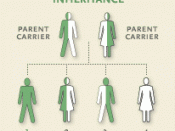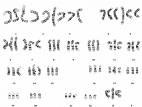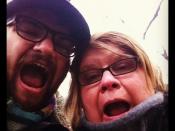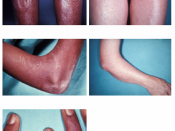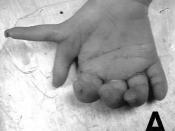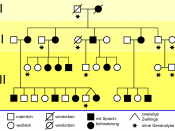In our biology class we were assigned a genetic defect to research and we got polydactyly. Polydactyly is where there are extra digits on the hand and or foot. These extra digits are usually incomplete and may be without a bone. Polydactyly does not impair you from doing day-to-day tasks and normal activities. In some polydactyly cases it may prevent you from wearing normal shoes and of course gloves. If this becomes a problem surgery is a solution to this.
Polydactyly is not harmful to oneself. If the suffer wishes to have the digit or digits removed it is best recommended to do so within nine to twelve months of age. If the suffer has five digits and no thumb reconstructive surgery would most likely be performed. Therapy is recommended before and after the surgery. People do live with this genetic defect all their lives and it never seems to bother them.
They can preform basically all the activities and day-to-day tasks that people with five digits do. In a famous painting by Raphael I was surprised to find out that St Joseph has six toes on his left leg in "The Marriage of the Virgin", painted in 1504. It is very rare that you would come across something like this.
This genetic disorder, polydactyly, is inherited from either the mother or father or both. If the mother and the father does not have any extra digits but some one in their family does they may be a carrier and pass it down to their children. This also means that since the gene is dominant, children who have only one parent with the trait have a 50% chance of inheriting it. However, people in the same family carrying the same gene can have different degrees of polydactyly.
This genetic disorder is usually inherited as a dominant characteristic. It is possible to find this genetic disorder before birth and of course after birth. Before birth a doctor would use a fetal sonogram to detect this genetic disorder. After birth to examen this genetic disorder a little closer doctors would use an x-ray to look and see how they would perform surgery or to see if it would effect their lives. This genetic disorder does not shorten the life of a person with poldactyly.
"When looking for the genetic basis of a congenital hand malformation, the technique of choice is the so-called "indirect gene tracking". This method relies on genetic linkage, and is based on the tendency of DNA segments that are close together on a chromosome, to stay together during meiosis (they are "linked"). It is possible to screen for the gene of interest in an affected family by using genetic markers with a known chromosomal localization. When a marker and the disease gene are close together on the chromosome they are very likely to co-segregate ("inherit" together). The closer they are, the better the correlation in the inheritance pattern. This method provides the possibility to search for the hereditary basis of congenital disorders without previous knowledge about the gene and the protein it is coding for." (http://www.leeds.ac.uk/handsurgery/EJHS/wend.htm) "Twenty-five out of 81 family members were personally examined with consent. The personal details and diagnoses including a description of the phenotype of the hands and feet were registered. Diagnosis was based on a patient-interview and the appearance of the hands and feet. All affected family members have had surgical treatment of their hands. The feet of all patients were surgically treated except the feet of patients P1, P19, and P22 Figure 1: Pedigree of the examined English Caucasian family " Polydactyly is the most common hand disorder. Polydactyly happens once out of a thousand births. Polydactyly is also called polydacylia, polydactylism or hyperdactyly. Polydactyly is ten times more common in black than in whites. This deformity, polydactly, is unacceptable in many cultures.
Polydactyly does not impair you from doing day-to-day tasks and normal activities. Well we hope our project helped you understand polydactyly a little better.
